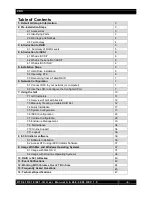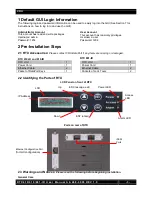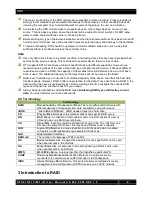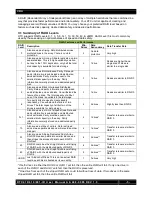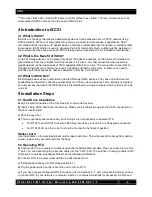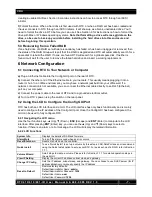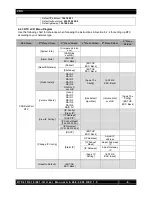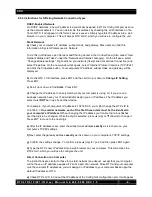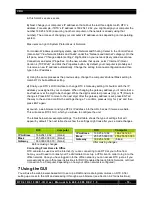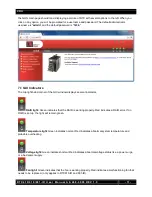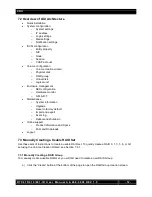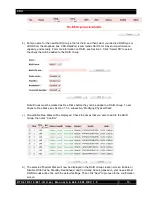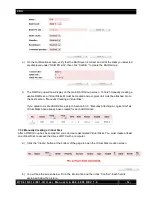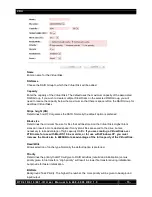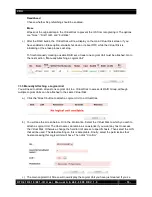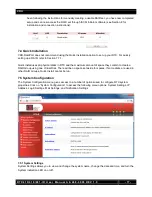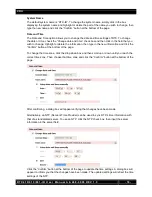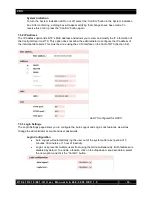
CRU
R T X 4 1 0 / 6 1 0 / 8 0 1 - I R U s e r M a n u a l A 9 - 4 6 8 - 0 0 0 5 R E V 1 . 0
- 4 -
The main circuit boards of the HDD carriers are susceptible to static electricity. Proper grounding is
strongly recommended to prevent electrical damage to the enclosure or other connected devices,
including the computer host. Avoid all dramatic movement, tapping on the unit, and vibration.
Avoid placing the HDD carriers close to magnetic devices, high voltage devices, or near a heat
source. This includes any place where the product will be subject to direct sunlight. Do NOT allow
water to make contact with the carrier or receiving frame.
Before starting any type of hardware installation, ensure that all power switches have been turned off
and all power cords have been disconnected to prevent personal injury and damage to the hardware.
To avoid overheating, RTX should be operated in a well-ventilated area and in such a way that
sufficient airflow is maintained across the controller chips.
RAID
Use only hard drives that are in perfect condition. Avoid using drives that have ever developed bad
sectors during previous usage. This could lead to possible device failure or loss of data.
RTX supports SATA hard drives of various specifications and different capacities. However, we
recommend using drives of the same brand and type for optimal performance. If drives of different
capacities are used in a RAID, the capacity of the smallest drive will determine how much of each
drive is used. The additional capacity on the larger drives will not be used by the RAID.
RAID level 0 will allow you to use the full combined capacity of the drives, and offers the best data
transfer speeds. However, RAID 0 offers no protection for the data. If one drive fails in a RAID 0, the
data on all of the drives is irretrievably lost. Before creating a RAID, investigate the various RAID
types and choose the one that is best for your needs.
Always back up data before switching RAID types
. Switching RAID types will destroy current
data.
You must reformat your drives afterwards.
2.4 Terminology
Terminology
RAID
R
edundant
A
rray of
I
ndependent
D
isks. There are different RAID levels with
different degrees of data protection, data availability, and performance.
JBOD
“
J
ust a
B
unch
O
f
D
isks”. JBOD needs at least one hard drive.
PD
P
hysical
D
isk. Belongs to the member disk of one specific RAID group.
RG
R
AID
G
roup. A collection of removable media. One RG consists of a set of
VDs and owns one RAID level attribute.
VD
V
irtual
D
isk. Each RG could be divided into several VDs. The VDs from one
RG have the same RAID level, but may have different volume capacity.
LUN
L
ogical
U
nit
N
umber. A unique identifier for a SCSI device which enables
computers to differentiate among separate SCSI devices.
GUI
G
raphical
U
ser
I
nterface.
RAID cell
The number of subgroups of PDs in an RG.
DS
D
edicated
S
pare disk. A spare disk dedicated to one specific RG and is used
when another disk in the RG fails.
GS
G
lobal
S
pare disk. A spare disk that is shared among all RGs and is used
when another disk in an RG fails.
WWN
W
orld
W
ide
N
ame. A unique identifier that identifies a particular PD.
CHAP
C
hallenge
H
andshake
A
uthentication
P
rotocol. An optional security
mechanism to control access to RTX through its iSCSI data ports.
iSNS
I
nternet
S
torage
N
ame
S
ervice. This protocol allows automated discovery,
management, and configuration of iSCSI devices on a TCP/IP network.
3 Introduction to RAID


